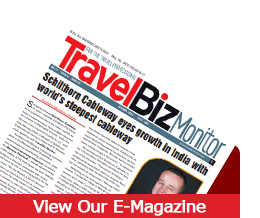Gregg Wafelbakker, General Manager Asia, Tourism New Zealand, in a conversation with Disha Shah Ghosh talks about India as an inbound source market, and their trade activities here.
How is your strategy different compared to the pre-pandemic era for the Indian market?
Pre-pandemic, India ranked on the 6-7 spot for inbound arrivals, ranking very high for us. We saw 67,000 arrivals from India in the year (2019) leading up to the pandemic that had doubled in five years growing at an average of 15% each year. India was already an important market before the pandemic, and will continue to be so.
The strategy that we have for India won’t fundamentally change because the strengths pre-pandemic are continue to remain, and i.e. India is a large and growing market; it has a natural bias towards our off peak arrivals, i.e. the summer holidays. The peak travel time to New Zealand is April May June and October November, and that enables us to spread the visitation.
Our strategy will remain the same which includes working with trade partners, media and of course a lot of work online and offline, and in principle we will continue to maintain that.
For the first time we had a trade marketplace in Singapore where we had buyers from 4 countries, and 15 of them from India. The event was successful and the feedback from buyers and suppliers was satisfactory. This trade show was about reconnection. The next edition would be decided on the popularity and the outcome of these events.
In the absence of direct air access, what efforts are being made to bridge that gap?
Pre-pandemic, Singapore Airlines offered the largest choice of flights, followed by Malaysia Airlines via Bangkok and Kuala Lumpur, Thailand and China Southern Airlines. We expect to recover back through 2023.
As a destination marketing organisation, we work with airports that put together business cases to airlines, and the role we play is collaborating with them around the demand. The research that we undertake is about the demand, and the sustainability of that demand. We will continue to support airports in this endeavour. Having a direct flight will be preferable, but it’s not an easy decision to make.
What kind of marketing budget are you allocating for India?
We allocate funds depending on the current and future potential of our source markets, and India is a priority emerging market so we allocate funds relevant to that.
We have a target audience of 12.3 million people, which is a niche, so our focus has been Mumbai and Delhi, and logically it makes sense to continue to focus on these markets because we are getting 60,000 arrivals from India.
Which traveller segments are your focus areas?
40% of traffic from India consists of Leisure travellers, and 50% is VFR. VFR wasn’t an area of focus for now, but the pandemic pivoted focusing on the domestic travel market to push the economy. The more New Zealanders know about their destinations the better, because then VFR traffic can maximise contribution to domestic tourism. The other focus is on business events, as incentives travel is a growing market for us. Through our trade relations we focus on the Incentive component, like our partner Thomas Cook that is a full-fledged tour operating company.
As countries open up, we have gone from 4 million arrivals, and out of that 1 million came from Asia. The contribution of Asian travellers is valued at 3 billion dollars in 2019. What we need to do to build more resilience going forward is looking at more markets and more audiences. By building a portfolio of resilient markets, we have more balance in times of crisis.
Are you only focusing on high-spending visitors from India?
High quality visitors, doesn’t mean high value, the latter is a component of the former, and India leans towards that. The average length of stay of Indians in New Zealand is 14 days because they are staying more, spending more and exploring more parts of the country.
We are looking for high quality visitors across four different parameters – Economic, Environmental, Communities and Culture. New Zealand is a premium destination, and Indians have a bias towards that.






